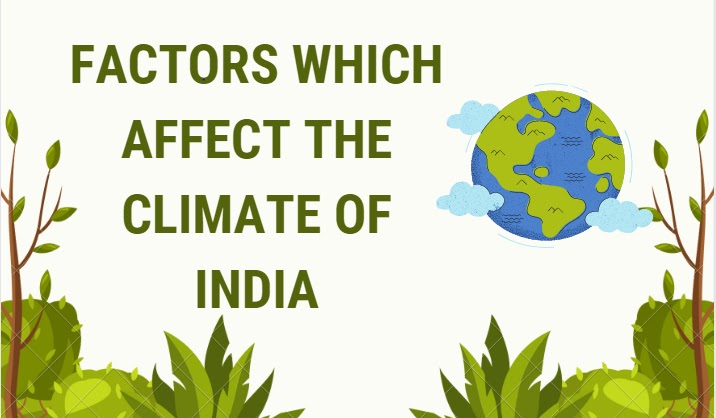FACTORS WHICH AFFECT THE CLIMATE OF INDIA
A number of factors control the Climate of the World as well the climate of India. Following are the Factors related to location and relief that affect the Climate of India.
1 Latitude
2 The Himalayan Mountains
3 Distribution of Land and Water
4 Distance from the Sea
5 Altitude
6 Relief
Factors related to location and relief.
1. Latitude
- India's northern boundary extends upto 37°6'N latitude
- Southern boundary of India's mainland extends upto 8°4'N latitude
- Southern boundary of India, which is Indira Point, extends upto 6°45'N latitude in the Bay of Bengal.
2 The Himalayan Mountains
3 Distribution of Land and Water
Sun heats up the Land and Water on the earth. Lands heats up and cools down fast as compared to the water means water heats up slowly and cools down slowly.
India is surrounded by water bodies on three sides. Indian peninsula is surrounded by Bay of Bengal on the east, Indian ocean on the south, and Arabian sea on the west
The difference in heating of the land and water creates different air pressure in different seasons in India.
4 Distance from the Sea
Sea breeze and land breeze helps in maintaining the moderate temperature and as India is surrounded by water bodies on three sides, the coastal areas do not experience extremes of climate but the areas which are far away form the sea experience extremes of climates.
5 Altitude
We all have studies this many times that the Temperature decreases with height. Thus, areas on the higher altitude are cooler than the areas on plains. For example, Agra and Darjiling experience different temperatures beside they are on the same latitude the Darjiling is a much cooler place as compared to the Agra because of its altitude.
6 Relief
Also read: India Structure and Physiography and India longitudes, latitudes and Indian Standard Time.

